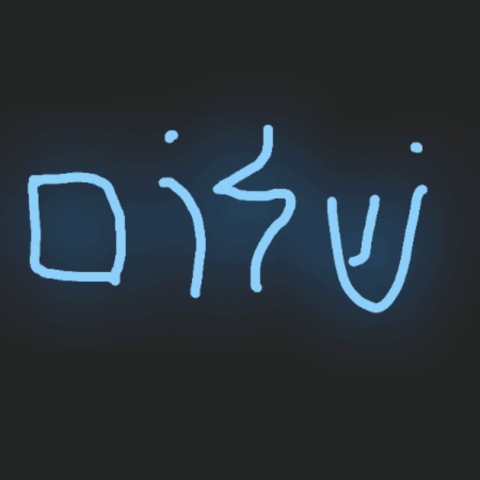The full study is now on line covering
the Alef - Beyt in detail @hebrew on Steemit.com. The vowels are marked in this bible and are designed to help avoid confusion on what a word is and how it is pronounced, as if there is not already enough of that in the interpretations globally. In modern spoken Hebrew, only children need the niqqud until they have the pronunciation memorized.
No reading this week. We made sounds and followed the shapes of the letters last week, and we can see the English under the Hebrew, as interpreted (not translated) by the author if the interlinear Tanakh.
Today I want to give you
An introduction to some vocabulary words, and a bit about how one Hebrew word contains several words in English - they attach to the front of words as prefixes. Then a little bit of structure.
The three images below are the same, but with different aspects highlighted.
The B or V sound
at the beginning of a word is usually interpreted "and" which is normally a vav
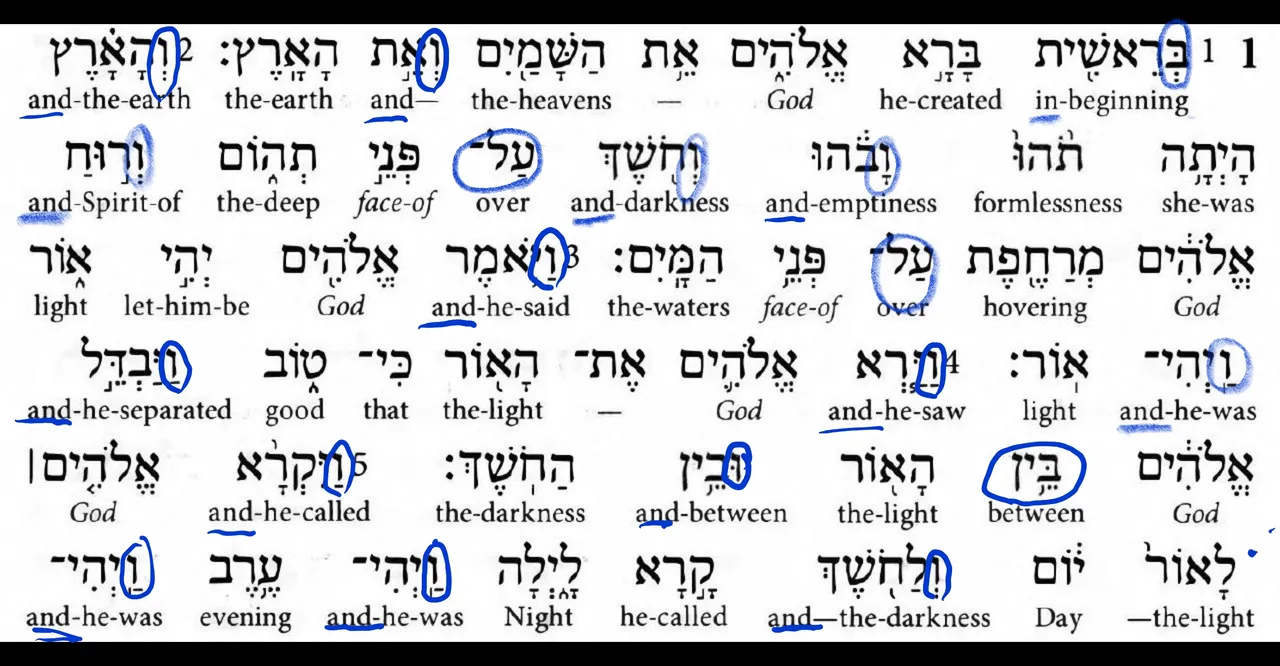
Other B and V sounds can be interpreted as various prepositions; in, at, on, etc. The above image shows all of the occurrences of and
It also shows other various prepositions of time and location.
Next lets look
at the definite article the. If you see the letter hey at the beginning of a word it is usually the
At times hey at the beginning is part of a verb, an action done by a female person or thing in the second line, we see she was = ha-y'tah
Compare the same action done by something male (bottom left) va-y'hee in this case (masculine) evening
The action or verb "to be" is not used much in Hebrew at all, but it is here a lot as things are coming into being.
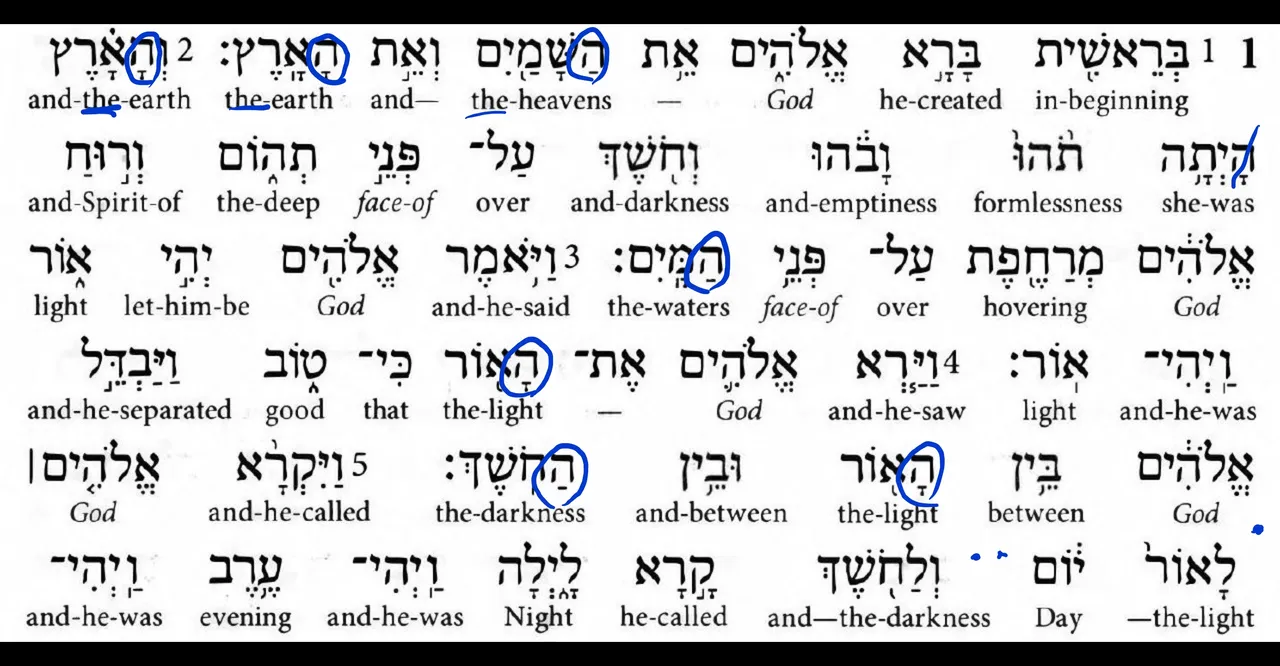
There are other uses for a leading "hey" which we can leave for later.
Here are some nouns
Notice the and or the at the beginning of some of them. In the upper left "and the earth" is written as one word, but you can see the vav = and + hey = the + erets = earth
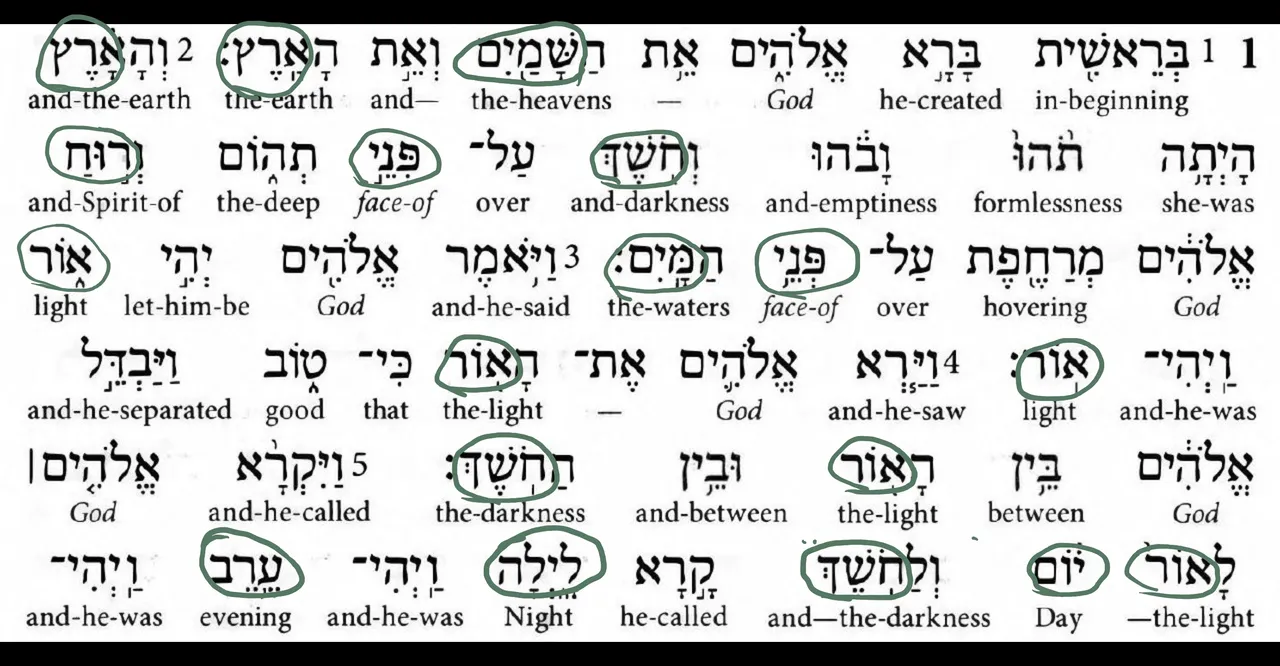
Also note that the word "heavens" sh'mayim contains the "waters" mayim. Then the Spirit hovered over the face of the waters.
You can go back and listen to the DTube reading in order to hear these nouns (person place or thing) pronounced and practice learning the word and meaning.
Finally
I wanted to answer a question which is being treated as a mystery in English. I do not disagree that Yeshua is the Alef and the Tav. He is the beginning and the end. All of the symbolism is wonderful.
The word et has a function. It points to the object of a verb similar to the Spanish use of "a" or "al" And, a Spanish speaker would see no mystery in the word "et". It would be seen as structural. (probably true of most Latin languages, but I don't speak any others. I understand some).
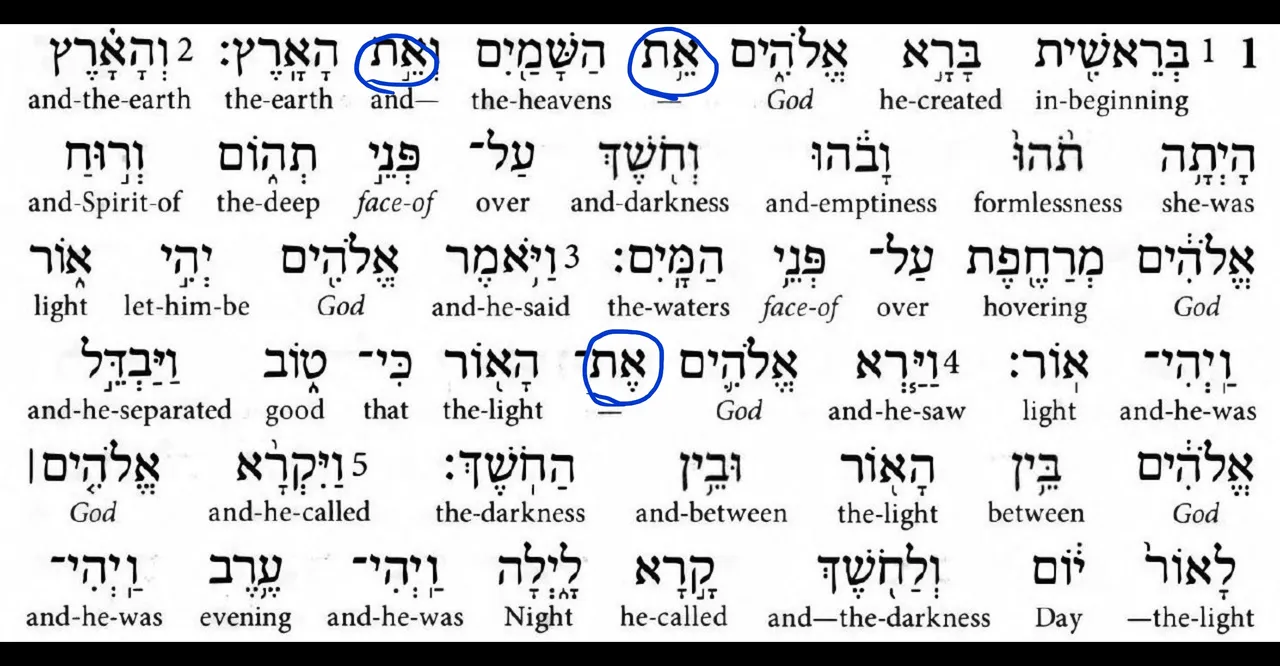
Take a look at a simple structure in English, Spanish, and Hebrew
| Subject | Verb | Object |
|---|---|---|
| One that does | Action | Directly affected by action |
| The father | kisses | the mother |
| El papá | besa | a la mamá |
| subject | verb | "a" object |
<--Object et <--Verb <-- Subject
האב - מנשק - את האם
The et is structural and the language needs this word
It is a pointer, pointing to the receiver of love, the land that was created, the one being kissed...
The mechanics of Hebrew has similarities to the workings of Spanish. There are differences. If you look at a Spanish bible you would not see the word a in the first line where et is. Spanish only uses the pointer for people or motion. Hebrew has its rules and you will see et everywhere to indicate the end of the first part of the sentence.
"who did it?" and "what did they did?" + ET + "to whom or what?"
This was your first look
On how to break down Hebrew words, some of the prefixes and some nouns. If you read ahead, you will find yourself recognizing "and" at the beginning of words, "the" at the beginning of other words. You will now be able to pick out other nouns
You have what you need to start making these connections on your own, reading and checking to see if you have the vowel sounds right. I will be reading more next week. Or maybe another song
Until then Shabbat Shalom
Now evening and morning, yom echad!
Get your Hebrew Bible now!
Click here to obtain the book we are using. It is a free download - or browser usable.
Thanks for taking the time to watch and read.
